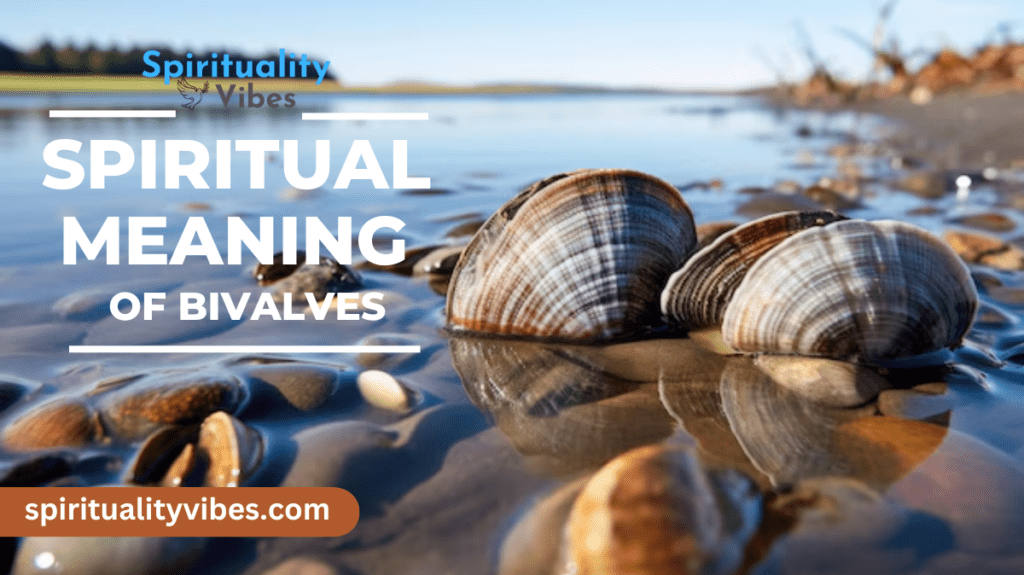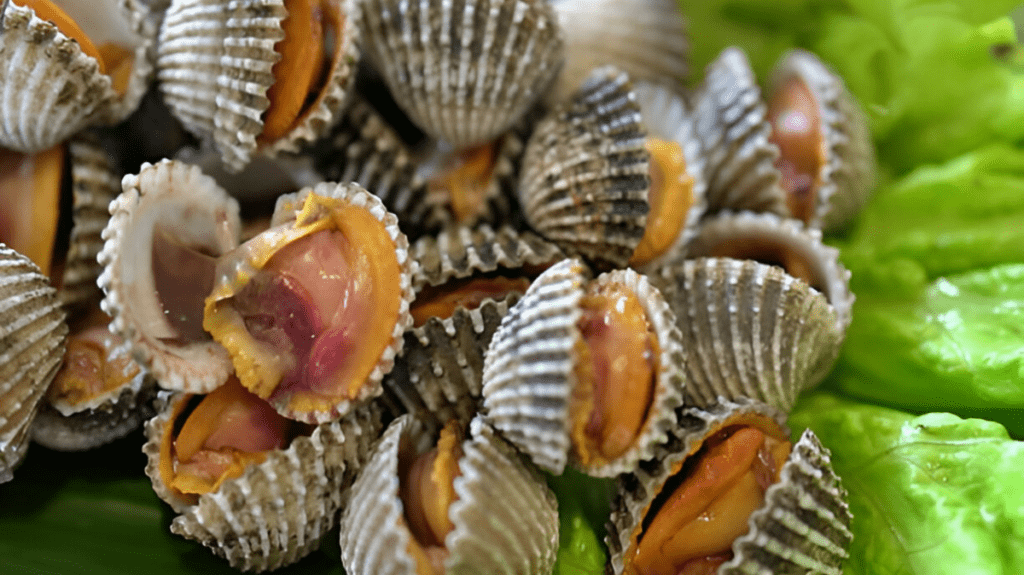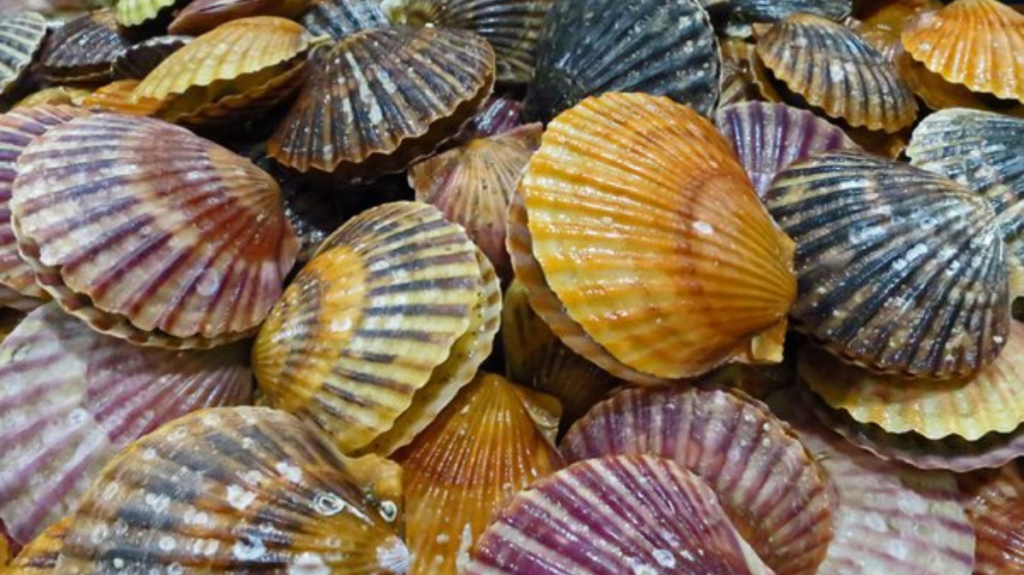We’re going to dive into the fascinating world of bivalves and their spiritual meaning. Bivalves are a special group of sea creatures that include clams, oysters, mussels, and scallops.
You might think they’re just simple animals that live in the ocean, but they have a lot to teach us about life, spirituality, and our own journey through the world.

Contents
- 1 Overview of Bivalve Symbolism
- 2 Importance of Bivalves in Spirituality
- 3 Meaning and Messages of Bivalves
- 4 Characteristics of Bivalves
- 5 Types of Bivalves
- 6 Spiritual Significance of Bivalves
- 7 Lessons from Bivalves
- 8 Focus on Mussels
- 9 Spiritual Practices Involving Bivalves
- 10 Bivalves in Mythology and Folklore
- 11 Modern Interpretations and Applications
- 12 Conclusion
- 13 Frequently Asked Questions
Overview of Bivalve Symbolism
Bivalves are packed with symbolic meaning. Let’s take a closer look at some of the main ideas they represent:
Protection: The hard shell of a bivalve is a clear symbol of protection. It reminds us to shield ourselves from negative energy and harm.
Hidden beauty: Pearls form inside oysters, hidden from view. This symbolizes the idea that true beauty and value often lie beneath the surface.
Adaptability: Bivalves can survive in changing conditions, opening and closing their shells as needed. This represents the importance of adapting to life’s changes.
Filtering: Bivalves filter water for food, which symbolizes the ability to take in what’s good and filter out what’s harmful.
Transformation: The creation of a pearl from a grain of sand represents the power of transformation and turning challenges into something beautiful.
Unity: The two halves of a bivalve’s shell represent unity and balance. They show how two parts can come together to create a whole.
Importance of Bivalves in Spirituality
Bivalves play a big role in many spiritual traditions around the world. People have long seen these creatures as symbols of important ideas and values. Let’s explore some of the ways bivalves are important in spirituality.
First, bivalves are often seen as symbols of the soul. Just as the soft animal is protected by a hard shell, many believe our inner spirit is protected by our physical body. This idea helps us think about the connection between our inner and outer selves.
Bivalves are also important because they live where the land meets the sea. In many spiritual traditions, the meeting of land and water is a special, magical place. It represents the boundary between the physical world and the spiritual world. Bivalves, living in this in-between place, are seen as creatures that can connect these two realms.
Another reason bivalves are spiritually important is their ability to create pearls. Pearls have long been seen as symbols of wisdom, purity, and spiritual transformation. The fact that bivalves can create something so beautiful and valuable from a small irritation is seen as a powerful spiritual lesson.
Meaning and Messages of Bivalves
Bivalves are like little messengers from the sea, each carrying its own special message for us. When we look at how they live, we can learn a lot about how to face our own challenges and grow as people.
One big message from bivalves is about protection. These creatures have hard shells that they can close tight when danger comes near. This teaches us that it’s okay to protect ourselves when we feel threatened or scared. Just like a clam closing its shell, we can set boundaries to keep ourselves safe.
But bivalves don’t stay closed forever. They also teach us about opening up when it’s safe. They open their shells to feed and grow, reminding us that we need to open ourselves up to new experiences and relationships to truly live and thrive.
Another important message from bivalves is about patience and transformation. Think about how an oyster makes a pearl. It takes a tiny grain of sand, which is irritating to the oyster, and slowly, over time, turns it into something beautiful. This shows us that even our struggles and irritations can become something valuable if we’re patient and keep working at them.
Characteristics of Bivalves
To understand the spiritual meaning of bivalves, it helps to know a bit about how they live and what makes them unique. Bivalves are pretty amazing creatures!
Most bivalves have two shells connected by a hinge, which they can open and close. Inside the shells is the soft body of the animal. Many bivalves use a “foot” to move around or dig into sand or mud.
Bivalves are filter feeders. This means they pull water into their bodies, take out tiny bits of food, and then push the water back out. In doing this, they help clean the water around them.
Some bivalves, like oysters, can make pearls. This happens when a small object gets inside the oyster’s shell and irritates it. The oyster covers the object with layers of a special substance, eventually forming a pearl.
Many bivalves can live for a long time. Some species of clams can live for over 100 years! This long life span adds to their spiritual significance, as they’re seen as creatures of endurance and wisdom.
Types of Bivalves
There are many different types of bivalves, and each has its own special traits and spiritual meanings. Let’s look at a few of the most common ones:
Oysters: These are probably the most famous bivalves, known for making pearls. Oysters teach us about turning irritations into something beautiful.
Clams: Clams are great diggers. They burrow into sand or mud, which symbolizes going deep into ourselves to find truth.
Mussels: These bivalves often live in groups, attached to rocks or each other. They represent community and working together.
Scallops: Scallops can swim by clapping their shells together. They symbolize freedom and the ability to escape from danger.
Each type of bivalve has its own lessons to teach us. By learning about different bivalves, we can gain a fuller understanding of their spiritual significance.
Spiritual Significance of Bivalves
Symbolism in Different Cultures
Bivalves have special meanings in many cultures around the world. Let’s explore some of these:
In Native American traditions, some tribes see bivalves as connected to the moon and water spirits. They might use shells in ceremonies or as tools for healing.
In many Asian cultures, bivalves are symbols of good fortune. Pearls are especially prized and are thought to bring luck and prosperity.
Ancient Romans connected bivalves, especially scallops, with love and fertility. The goddess Venus was often shown with a scallop shell.
In Christian symbolism, the scallop shell became associated with pilgrimage and baptism. It represents spiritual journey and rebirth.
These are just a few examples of how bivalves are viewed in different cultures. Each tradition has its own unique perspective on these fascinating creatures.
Bivalves as Spiritual Signs and Totems
Some people feel a special connection to bivalves and see them as spiritual guides or totems. If you find yourself drawn to bivalves, it might be a sign that you need to pay attention to their lessons in your life.
For example, if you keep seeing images of oysters or finding oyster shells, it might be a sign that you need to look for the hidden beauty in a situation. Or it could mean that you’re in a process of turning a challenge into something valuable, like an oyster turning a grain of sand into a pearl.
If clams keep showing up in your life, it might be a sign that you need to dig deep into yourself to find answers. Clams burrow into the sand, so they can represent the need to go beneath the surface of things.
Mussels appearing as a totem might suggest that you need to focus on community and working together with others. Mussels often live in groups, supporting each other against the force of the waves.
Remember, the meaning of a totem or sign is personal. What matters most is what the bivalve means to you and how its lessons apply to your life.

Lessons from Bivalves
Water and Purification
Bivalves live in water and help keep it clean. They filter out tiny particles as they feed. This teaches us about staying pure in our thoughts and actions. Just like bivalves clean the water around them, we can try to have a positive impact on our environment and the people around us.
Water is also a symbol of emotions. By filtering water, bivalves show us how to process our emotions. We can learn to let go of negative feelings and hold onto the positive ones.
Embracing Change
The ocean is always changing, with tides coming in and out, storms stirring things up, and calm days in between. Bivalves have to adapt to all these changes. They teach us to go with the flow and be flexible when things change in our lives.
Sometimes, change can be scary. But bivalves show us that change can also bring good things, like food or new opportunities. By learning to embrace change, we can grow and thrive just like bivalves do in their ever-changing ocean home.
Discernment and Choice
Bivalves can open and close their shells. This simple action teaches us an important lesson about making choices. We need to know when to open ourselves up to new experiences and when to close ourselves off for protection.
This is called discernment – the ability to judge well. Sometimes, it’s good to be open, like when we’re learning new things or meeting new friends. Other times, we might need to close ourselves off, like when we’re in a negative situation or need time to ourselves.
Transformation and Growth
The way some bivalves, like oysters, create pearls is a powerful lesson in transformation and growth. An oyster takes something irritating – a grain of sand – and turns it into something beautiful and valuable.
This teaches us that we can do the same with the irritations and challenges in our lives. Instead of just being annoyed by problems, we can try to learn from them and turn them into something positive. It might take time, just like it takes time for an oyster to make a pearl, but the result can be beautiful.
Fertility and Abundance
Many bivalves can produce thousands of offspring. This represents fertility and abundance in nature. It reminds us that life is full of possibilities and opportunities.
Even when things seem scarce, bivalves teach us to trust in the abundance of the universe. There’s always potential for growth and new beginnings, just like the countless baby bivalves born in the ocean every year.
Focus on Mussels
Unique Spiritual Attributes of Mussels
Mussels are special among bivalves. They often live in groups, attached to rocks or to each other. This teaches us about the strength of community and working together.
Mussels can survive in rough waters by holding onto rocks and each other. This shows us the importance of having strong connections with others. It teaches us that we’re stronger when we support each other.
The dark, shiny shells of mussels are also meaningful. They remind us that strength and beauty can come in many forms. Something doesn’t have to be bright and flashy to be valuable or powerful.
Comparisons with Other Bivalves
While oysters are famous for making pearls, mussels teach us different lessons. Oysters show us how to turn irritation into beauty, but mussels show us how to stand strong against the forces of nature by sticking together.
Clams burrow into the sand, teaching us about going deep within ourselves. Mussels, on the other hand, cling to the surface of rocks. This teaches us about staying grounded and holding on during tough times.
Scallops can swim by clapping their shells, which represents freedom. Mussels, by staying in one place, represent commitment and the strength that comes from putting down roots.
Specific Lessons from Mussels
Mussels teach us to hold on tight when things get rough. In stormy seas, mussels cling to rocks and to each other. This reminds us to stay true to our beliefs and to stick with our friends and family through hard times.
Another lesson from mussels is about finding your place in the world. Mussels attach themselves to a spot and grow there. This teaches us that sometimes, committing to a place or a community can help us grow strong.
Mussels also show us that it’s okay to rely on others. In a group of mussels, each one supports and is supported by the others. This reminds us that asking for help when we need it is a sign of strength, not weakness.
Spiritual Practices Involving Bivalves
Ceremonial Uses
Bivalve shells have been used in spiritual ceremonies for thousands of years. In many coastal cultures, shells are seen as sacred objects that connect us to the ocean and its wisdom. Here are some ways people use bivalves in ceremonies:
Some Native American tribes use large shells as smudge bowls. They burn sage or other sacred herbs in the shell to cleanse spaces or people of negative energy. The shell represents the element of water, balancing the fire of the burning herbs.
In some Pacific Island cultures, people blow into large conch shells (which are a type of sea snail, not a bivalve, but related) as a call to gather for important events or ceremonies. The sound of the shell is believed to reach both the physical and spiritual worlds.
Shells are also used as offering bowls in many traditions. People might place small gifts, like flowers or food, in a shell as an offering to spirits or deities associated with the sea.
Meditation and Contemplation
Bivalves can be powerful tools for meditation and spiritual reflection. Here are some ways you can use them:
Hold a shell in your hand during meditation. Feel its texture and shape. Imagine the calm of the ocean and let that peaceful feeling spread through your body.
You can create a “listening meditation” by holding a large shell to your ear. The sound you hear, often called “the ocean in a shell,” is actually the sound of blood flowing in your ear. But imagining it’s the distant sound of the sea can help you feel connected to the vast, calming presence of the ocean.
Some people like to arrange shells in patterns, like a spiral or a circle, and use this as a focus point for meditation. As you look at the pattern, you can reflect on the journey of life or the cycles of nature.
Divination and Fortune-telling
In some traditions, shells are used for divination – the practice of seeking knowledge about the future or hidden things. Here are a couple of ways this is done:
Some diviners use a practice called conchomancy, where they toss a collection of shells and read meanings in how they fall. Different shells might represent different aspects of life, like love, work, or spiritual growth.
In some African traditions, cowrie shells (another type of sea snail) are used for divination. The shells are tossed and their positions are interpreted to answer questions or provide guidance.
Remember, these practices are based on spiritual beliefs and traditions, not scientific evidence. But many people find them meaningful ways to reflect on their lives and seek guidance.
Bivalves in Mythology and Folklore
Greek Mythology
In Greek myths, bivalves play some interesting roles. One of the most famous stories involves the goddess Aphrodite. In some versions of her story, she was born from sea foam and rose from the ocean in a giant scallop shell. This connects bivalves to ideas of love, beauty, and divine birth.
Another Greek myth talks about the hero Perseus using a scallop shell as a drinking cup. This shows how shells were seen as useful and valuable items, worthy of being used by heroes and gods.
Japanese Legends
Japan, being an island nation, has many legends about sea creatures, including bivalves. One famous story is about Urashima Taro, a fisherman who saves a turtle and is rewarded with a visit to a magical underwater palace. In some versions of the story, this palace is inside a giant shell!
There’s also a Japanese myth about Namazu, a giant catfish that causes earthquakes. In some versions of this story, the catfish is held down by a large stone, and the only thing that can control the stone is a clam. This shows how even small creatures like clams can have great power in mythology.

Other Cultural Stories and Beliefs
Many cultures around the world have stories and beliefs about bivalves. Here are a few:
In some Native American traditions, clams are seen as keepers of ancient wisdom. They believe that because clams live so long and are connected to the sea, they hold knowledge of the past.
In parts of West Africa, cowrie shells (which are snails, but often grouped with bivalves) were used as money. This connects shells to ideas of wealth and value.
In Polynesian cultures, mother-of-pearl (the shiny inner layer of many bivalve shells) is often used in art and jewelry. It’s seen as a symbol of harmony and protection.
These stories and beliefs show how bivalves have captured human imagination all around the world. They connect us to the mysteries of the sea and teach us lessons about life, value, and the power of small things.
Modern Interpretations and Applications
Contemporary Spiritual Perspectives on Bivalves
Even in our modern world, many people find spiritual meaning in bivalves. Here are some ways people connect with bivalves spiritually today:
Some people see bivalves as symbols of environmental awareness. Because bivalves are sensitive to pollution and help clean water, they remind us to take care of our oceans and waterways.
In some modern pagan and nature-based spiritualities, bivalves are honored as representations of the element of water. They might be included on altars or in rituals focused on emotional healing or intuition.
Some spiritual teachers use the image of an oyster creating a pearl as a metaphor for personal growth. They encourage people to see their challenges as opportunities to create something beautiful in their lives.
Bivalves in Dream Interpretation
Many people believe that dreams can carry important messages from our subconscious or from a spiritual realm. Bivalves appearing in dreams can have various meanings:
Dreaming of oysters might suggest that you’re in a process of creating something valuable in your life. It could also mean that you need to look for the hidden value in a situation.
Clams in dreams might represent feelings of being closed off or protected. If you dream of digging for clams, it could mean you’re searching for hidden truths or emotions.
Dreaming of pearls often symbolizes wisdom, purity, or a valuable discovery about yourself.
Remember, dream interpretation is very personal. The meaning of a dream depends a lot on your own feelings and experiences.
Symbolism in Tattoos and Art
Bivalves and their shells are popular symbols in modern art and tattoos. Here’s what some of these symbols might mean:
A tattoo of an oyster with a pearl might represent personal growth or the ability to create beauty from adversity.
Scallop shells are sometimes used as symbols of travel or pilgrimage, inspired by their use in ancient times to mark pilgrimage routes.
In art, open shells might symbolize revelation or openness, while closed shells could represent protection or secrets.
Mother-of-pearl is often used in jewelry and decorative arts, prized for its beautiful, shifting colors. It can symbolize the beauty of change and adaptation. rocks to stay safe in strong waves. We can find our own “rocks” – like good friends, family, or things we believe in – to help us when things get hard.
Conclusion
Bivalves, especially mussels, have a lot to teach us. They show us how to be strong, work together, and make good things out of bad situations. They remind us to be careful about what we let into our lives and to stay strong when things are hard.
Next time you see a mussel, clam, or oyster shell, remember all the wisdom these little sea creatures can share. Maybe you’ll find a special message just for you! Think about how you can be strong like a mussel, or how you can work together with others to do great things. You might even want to keep a shell in your pocket to remind you of these lessons.
Remember, even the smallest things in nature can have big meanings if we take the time to think about them. So next time you’re at the beach or near a lake, take a moment to look at the bivalves. You might be surprised at what you can learn from these amazing little animals!
Frequently Asked Questions
What makes bivalves special in spiritual ways?
Many cultures see bivalves as symbols of cleaning, changing, wisdom, and turning into something better. People have thought bivalves were special for a very long time because of how they live and grow.
How are mussels different from other bivalves in what they mean?
Mussels especially stand for community, being strong, and doing well in tough conditions. They show us how working together can help us survive and thrive.
Can I use bivalve shells in my own spiritual practice?
Yes, many people use shells when they sit quietly to think, in special ceremonies, or as decorations in special places. You could try holding a shell when you feel stressed to help you calm down.
What does a pearl mean in spiritual ways?
Pearls remind us of hidden beauty, growing as a person, and making something good out of something hard. They show us that challenges can lead to beautiful results if we’re patient.
How can I use what bivalves teach us in my everyday life?
You could try to be strong like a mussel when things are hard. Or you could practice choosing good thoughts and ignoring bad ones, like how a bivalve filters water. You might also try working together with friends on a project, just like how mussels live in groups.
